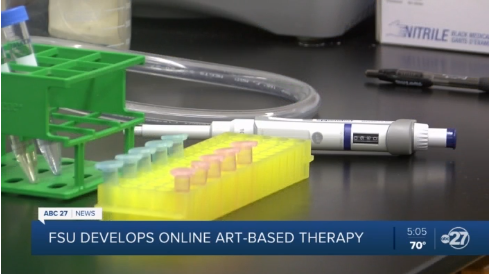FOR IMMEDIATE RELEASE
CONTACT: Kathleen Haughney, University Communications
(850) 644-1489; khaughney@fsu.edu
Tia Ford, Mayo Clinic
(904) 953-1419; Ford.Tia@mayo.edu
Feb. 25, 2020
JACKSONVILLE, Fla. — Florida State University President John Thrasher and representatives from Mayo Clinic in Florida signed a multifaceted agreement Tuesday in Jacksonville to attract and retain top talent in the biomedical field.
The collaborative education efforts will focus on medical innovation and promote a market-driven approach to create a highly trained workforce focused on taking medical technology from the research space to clinical practice.
“The relationship between Florida State University and Mayo Clinic represents an incredible opportunity for our students to benefit from the combined capabilities of these venerable institutions,” said FSU President John Thrasher. “We are thrilled that our students will be able to take advantage of the internship and research opportunities available through Mayo so they can progress in their biomedical education and add to the talent pool we have here in Florida.”
FSU has appointed Emily Pritchard, a researcher in the FSU College of Medicine, as director of the FSU-Mayo Collaboration to bring together various colleges at FSU that will benefit from the new collaborative initiatives. In addition to the opportunities for existing FSU students, Mayo staff will be able to access training and educational opportunities through FSU’s Office of Distance Learning.
“We are very pleased to announce this partnership, which will combine the incredible capabilities of our two institutions to accelerate innovative ideas to benefit patients through the development and commercialization of biotechnology, a robust entrepreneurship program, and an enhanced workforce to meet the healthcare, research and development needs of Florida, the region and beyond,” said Dr. Kent Thielen, CEO of Mayo Clinic in Florida. “We feel very fortunate to have this opportunity to collaborate with such an exceptional university.”
The agreement creates new opportunities for FSU students to participate in internships at the Mayo Clinic campus in Jacksonville, working with physician mentors in clinical research and healthcare startups in the Life Sciences Incubator. Internship placements begin in summer 2020. In addition, FSU students in Tallahassee will have the opportunity to work on Mayo Clinic projects with contributions in data science, biostatistics and engineering. Faculty and students from Mayo Clinic will be able to train at FSU with world-renowned researchers and state of the art equipment at the main campus and National High Magnetic Field Laboratory.
As part of the collaboration, FSU will create an interdisciplinary biomedical entrepreneurship certificate program, combining the expertise of FSU’s Jim Moran College of Entrepreneurship and College of Medicine. The graduate certificate will be open to FSU students and Mayo employees.
Provost Sally McRorie called the agreement a win for both institutions.
“This is an unparalleled opportunity for FSU students whether they are interested in research, clinical work or biomedical entrepreneurship,” McRorie said. “We are also happy to be able to provide Mayo staff additional educational and training opportunities through our Office of Distance Learning as they progress in their careers. We are so proud to work with Mayo on this wonderful collaboration.”
###
About Mayo Clinic
Mayo Clinic is a nonprofit organization committed to innovation in clinical practice, education and research, and providing compassion, expertise and answers to everyone who needs healing. Visit the Mayo Clinic News Network for additional Mayo Clinic news and An Inside Look at Mayo Clinic for more information about Mayo.


